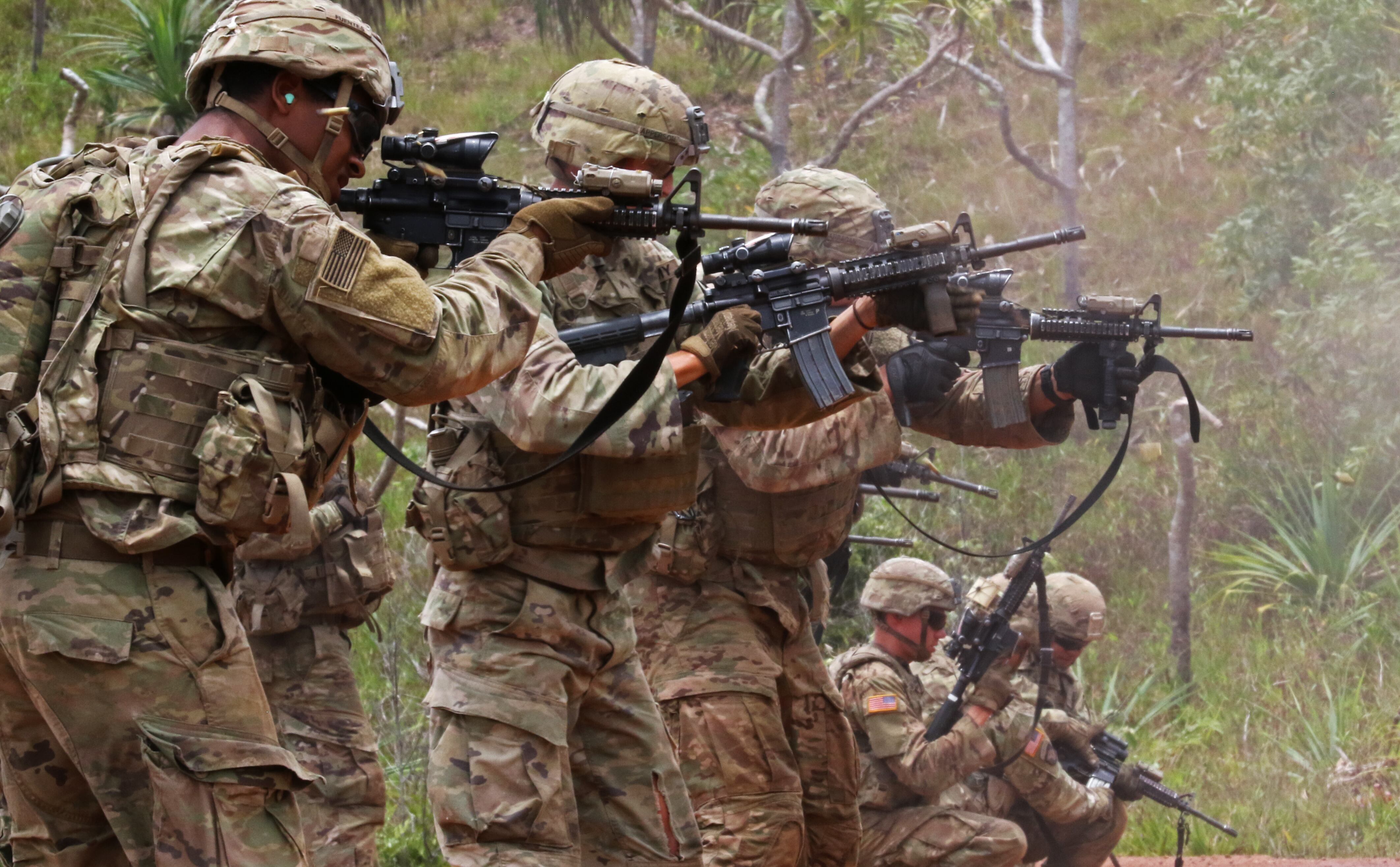Two of the Army’s top priorities are also some of its most expensive – long-range precision fires and air and missile defense. They’re both also absolutely essential to get anything done in the U.S. Indo-Pacific Command.
And the Army is throwing a lot of its priorities, and thinking, into how to get back into that game. But it won’t be easy.
Top leaders for both the Army and the region spoke at the 7th Annual Association of the U.S. Army’s Land Forces Pacific Symposium in Hawaii last week.
RELATED

Right away a stark reality was made clear: The U.S. military does not have enough ammunition stores to fight major combat in multiple regions across the globe, said Lt. Gen. Aundre F. Piggee, deputy chief of staff Army G-4.
“What keeps me up at night,” Piggee said, was having the right sustainment capability and stocks in the right place.
“We don’t have enough stocks for a fight in three or more theaters, we’re always adjusting,” Piggee said.
While always a moving target, the balance seems right, for now, the three-star said.
“For now” being key.
That’s because while “confidence is high” that the current ballistic missile defense system that protects the U.S. homeland and its allies can defeat the current threat, there’s no guarantee that what the United States has now will match what’s being developed, said Maj. Gen. Douglas Gabram, director for test at the Missile Defense Agency.
He noted that China is close to fielding hypersonic delivery systems that could hold off carrier battle groups or forward deployed land forces.
At the same time, recent news indicates that Russia is pushing both its air-launched ballistic missile and hypersonic glide vehicles to the Pacific to bolster forces and influence on its eastern sphere, Gabram said.
However, the two-star emphasized that the United States and its allies “can’t shoot our way out of this fight.”
The key is to enhance detection and discrimination of its systems to deliver the right effects at the critical targets.
“Time is our biggest enemy,” Gabram said.
Ultimately, the goal is simple, though getting there is taking a lot of work.
“Any sensor, any shooter, from any command and control node in near real time,” said Lt. Gen. Eric Wesley, deputy commander, and commander of futures and concepts at Army Futures Command.
One small way that Army leaders are getting at that problem is by finding new, intermediate technologies to improve targeting handoff and spreading shooters across a network.
Lt. Gen. James Dickinson, commander of the Army Space and Missile Defense Command, Army Forces Strategic Command, pointed to the use of a device the size of a dormitory room refrigerator last year known as Kestral Eye.
Basically, it’s a spy satellite that passes data from orbital satellites to the warfighter with little in between.
Those and other initiatives fold together in the renewed focus that the Army has placed on its missiles and defense from adversaries’ weaponry, much of that outlined for all of the services in the Missile Defense Review report from earlier this year.
Col. Mark Holler, Air Defense Artillery School commandant at the Army’s Fires Center of Excellence, said the review gives the services a renewed emphasis on attack operations and a more effective active defense.
The defensive aspects will remain top priority, but attack ops will “fuse together for a comprehensive approach.”
Which means quicker target sharing throughout the sensor/shooter network to hit enemy missiles before they launch or at least during the boost phase, said Col. Kareem Montague, commander of 5th Battlefield Coordination Detachment.
Todd South has written about crime, courts, government and the military for multiple publications since 2004 and was named a 2014 Pulitzer finalist for a co-written project on witness intimidation. Todd is a Marine veteran of the Iraq War.




